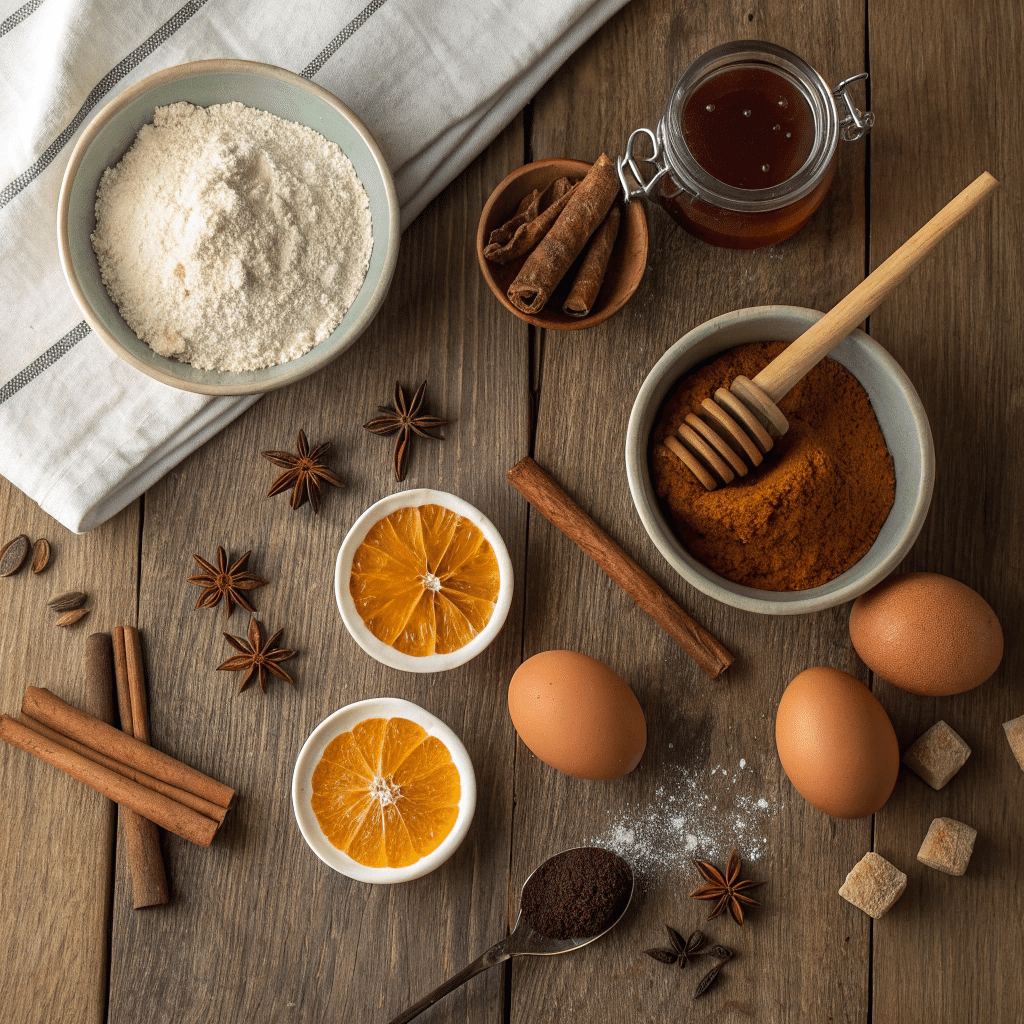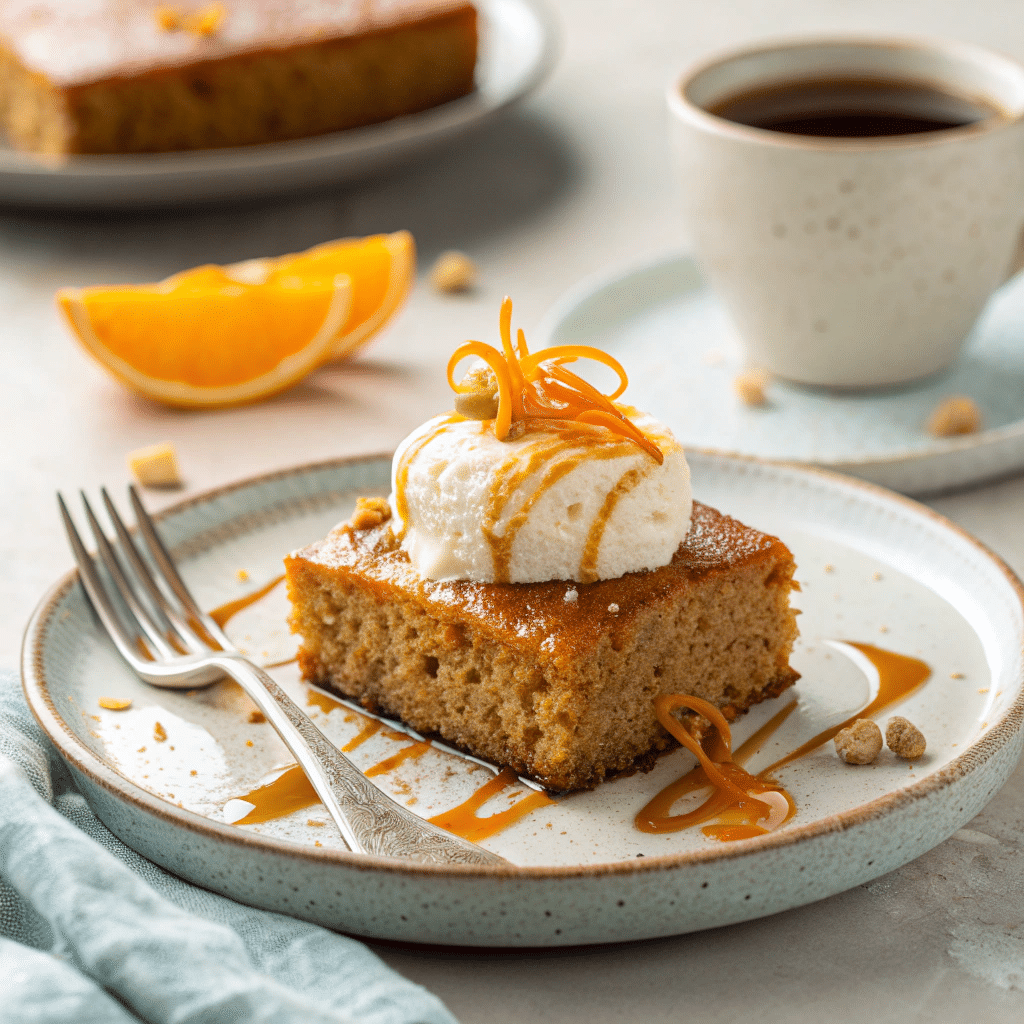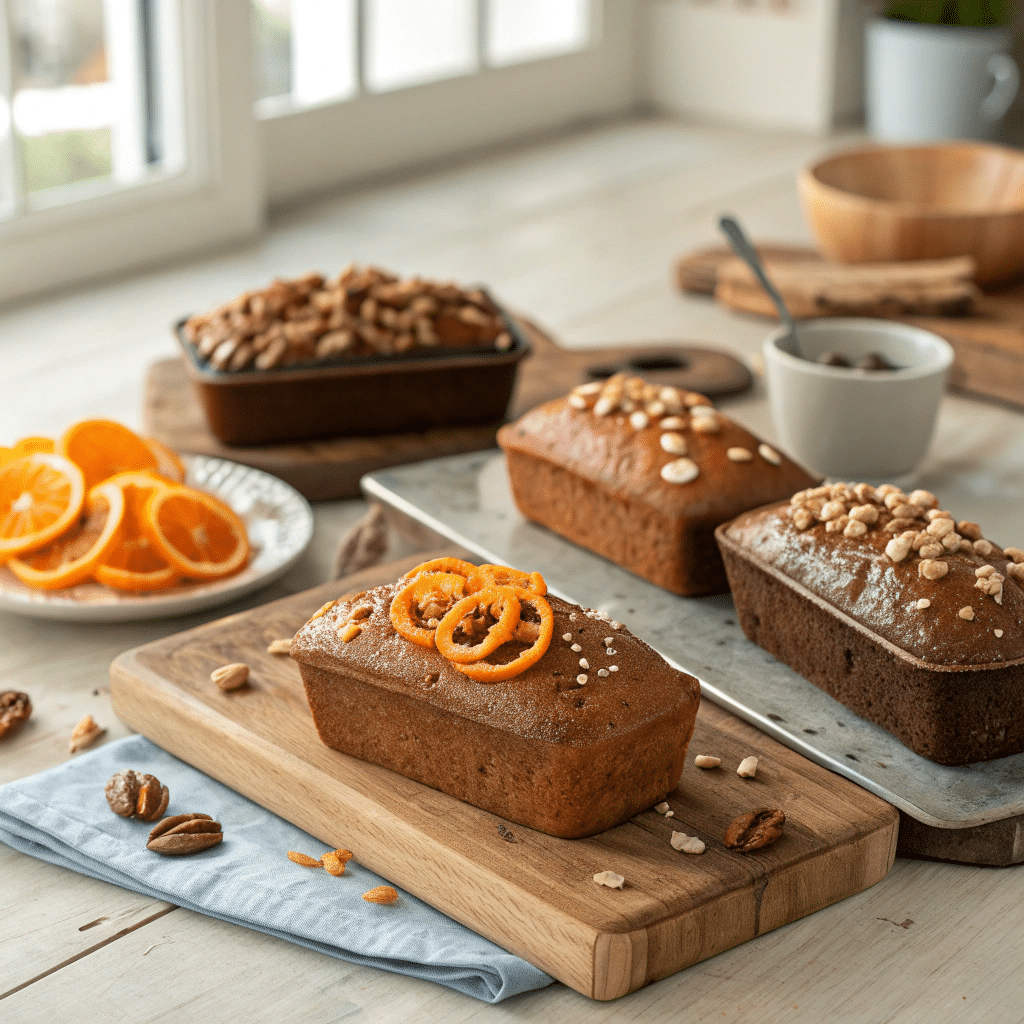There are some cakes that feel like a hug in edible form. Pain d’épices—also known as French spice cake or traditional spice bread—is one of those. It’s rustic, aromatic, and somehow both humble and full of character. Think of it as gingerbread’s elegant French cousin, born centuries ago in the Alsace region and still beloved today.
I first tried it while wandering through a small market in Strasbourg during winter. The air smelled like honey, cinnamon, and cloves. A baker handed me a slice of what looked like a dark, slightly dense loaf. The moment I tasted it, I understood why this spice bread has stood the test of time. Warm, fragrant, slightly sticky—it was pure comfort.
This cake is more than just a recipe. It’s a piece of French culinary history, often served during holidays but equally welcome with morning coffee or an afternoon tea. The best part? You don’t need a French bakery to enjoy it. With pantry spices, honey, and a good loaf pan, you can bring this classic to your own kitchen.
What Is Pain d’épices?
Pain d’épices literally translates to “spice bread.” Don’t confuse it with the frosted gingerbread cookies we know from December traditions. This French delicacy is a loaf-style cake, closer to banana bread in texture, but with a flavor profile that leans into cloves, cinnamon, star anise, and plenty of honey.
Historically, it was made with rye flour and spiced with ingredients brought through trade routes. In Alsace, it became a signature bake, often sold at Christmas markets. Some versions are denser and bread-like, while others are softer, almost like a spiced gingerbread loaf.
Think of it as the French take on gingerbread recipe traditions—no elaborate decorations, no fuss, just honest ingredients baked into something deeply comforting.
Ingredients You’ll Need

This is the kind of cake where the ingredients do most of the heavy lifting. Don’t skip the honey—it’s what sets pain d’épices apart from other spice cake recipes.
- Flour – Traditionally rye, but you can use all-purpose or a mix for a lighter loaf.
- Honey – The backbone of this cake. Go for a dark, flavorful honey if you can.
- Brown sugar – Adds depth and a bit more sweetness.
- Eggs – To bind everything together.
- Milk – Helps create a soft crumb.
- Baking powder + baking soda – For lift.
- Spices – Cinnamon, cloves, star anise, nutmeg, and a whisper of ginger. This is where the magic happens.
- Orange zest – A little brightness to cut through the richness.
Optional add-ins? Chopped nuts, candied ginger, or even a swirl of marmalade if you want a twist.
Step-by-Step Recipe: French Pain d’épices
Here’s my version, simple enough for a weekday bake yet impressive enough for guests.
Ingredients (1 standard loaf)
- 2 cups all-purpose flour (or 1 ½ cups all-purpose + ½ cup rye flour)
- 1 tsp baking powder
- ½ tsp baking soda
- 1 ½ tsp cinnamon
- ½ tsp cloves
- ½ tsp ground ginger
- ¼ tsp nutmeg
- ¼ tsp ground star anise (or anise seeds)
- Pinch of salt
- ¾ cup honey (preferably dark, floral honey)
- ½ cup brown sugar
- ¾ cup milk
- 2 eggs, lightly beaten
- 1 tsp vanilla extract
- 1 tbsp orange zest
Instructions
- Preheat the oven to 325°F (165°C). Grease and line a loaf pan.
- Mix the dry ingredients. In a large bowl, whisk together the flours, baking powder, baking soda, spices, and salt.
- Warm the honey and sugar. In a small saucepan, gently heat the honey and brown sugar until melted and smooth. Remove from heat and let cool slightly.
- Combine wet ingredients. In a separate bowl, whisk together milk, eggs, vanilla, and orange zest. Add the cooled honey mixture and stir until combined.
- Bring it all together. Pour the wet ingredients into the dry, mixing just until incorporated. The batter will be thick and fragrant.
- Bake. Transfer the batter to the loaf pan and smooth the top. Bake for 50–60 minutes, or until a toothpick comes out clean.
- Cool and serve. Let the loaf rest for at least 15 minutes before slicing.
How to Serve Pain d’épices

The beauty of pain d’épices is its versatility. You can serve it plain, straight from the loaf pan, and it’ll still taste like something you picked up from a charming French pastry stall. But if you’d like to dress it up, here are a few serving ideas:
- With ricotta or mascarpone. A thick slice topped with ricotta and a drizzle of honey makes for a breakfast that feels almost indulgent but is still wholesome.
- As dessert. Warm a slice and pair it with vanilla ice cream or whipped cream. It transforms into a rustic torte-style treat.
- With preserves. The French often spread marmalade or apricot jam on it. The tangy-sweet combo works beautifully with the spices.
- Tea-time snack. Pain d’épices is often enjoyed the way many of us would have banana bread—served with tea or coffee for a comforting pause in the day.
- Holiday platter. Cut into small squares, dust with powdered sugar, and you’ve got yourself a festive addition to your dessert table.
A Little History: From Alsace With Love
While many regions in France have their own pastry traditions, Alsace is where pain d’épices really took root. The area, with its blend of French and German influence, embraced spiced breads centuries ago. The recipe often included rye flour and was sweetened almost entirely with honey, which was more accessible than refined sugar at the time.
Legend has it that traveling merchants first brought the concept of spice cake from the East, and locals adapted it using their own ingredients. Over time, it became a signature bake of Strasbourg and Dijon. Today, both cities proudly claim their versions of the cake.
I remember chatting with a baker in Alsace who compared pain d’épices to “a story told through spices.” Each family has its own ratios, their own “secret.” Some add candied orange peel, some lean heavily on anise, while others prefer it mild and honey-forward. No two loaves are exactly alike.
Why You’ll Love This Recipe
- It’s easier than you think. One bowl for dry ingredients, one for wet, mix, and bake.
- The flavor gets better with time. Honestly, day two or three is peak enjoyment.
- It’s flexible. You can play with the spices or swap flours to suit your pantry.
- It’s the kind of cake that makes your kitchen smell like a holiday market. And who doesn’t want that?
Variations & Substitutions

Want to make it your own? Here are some ideas:
- Flour swaps. For a denser loaf, stick with rye flour. For lighter texture, use all-purpose.
- Sugar. Swap brown sugar for coconut sugar or even maple syrup (but reduce the honey slightly).
- Spices. Love ginger? Add more. Prefer it milder? Cut back on cloves.
- Add-ins. Fold in chopped nuts, candied ginger, or even dried figs for extra texture.
- Mini loaves. Divide the batter into smaller pans for giftable portions.
Final Thoughts
Baking pain d’épices at home feels a little like time travel. You get a taste of a centuries-old French tradition without leaving your kitchen. Whether you slice it thick for breakfast, serve it as dessert with a dollop of cream, or wrap it up as a thoughtful homemade gift, this spice cake delivers comfort in every bite.
If you’ve been craving something warm, fragrant, and a little different from your usual banana bread, give this recipe a try. It might just become your new go-to loaf.

Pain d’épices (French Spice Cake)
Ingredients
Method
- Preheat oven to 325°F (165°C). Grease and line a loaf pan.
- Mix dry ingredients. In a bowl, whisk flour, baking powder, baking soda, spices, and salt.
- Warm honey and sugar. In a small pan, heat honey and brown sugar until smooth. Let cool slightly.
- Combine wet mix. In another bowl, whisk milk, eggs, vanilla, and orange zest. Add in the cooled honey mixture.
- Mix wet and dry. Stir wet ingredients into the dry until just combined. Don’t overmix.
- Bake. Pour batter into loaf pan and smooth the top. Bake 50–60 minutes, or until a toothpick comes out clean.
- Cool. Let rest for 15 minutes, then slice and enjoy.
Notes
- This cake tastes even better on the second or third day once the flavors have settled.
- Store it wrapped at room temperature for up to 4 days, or freeze slices for longer storage.
- You can swap rye flour in or out depending on how dense you like your cake.
FAQs About Pain d’épices
Q: Is pain d’épices the same as gingerbread?
Not quite. Gingerbread recipes usually lean heavily on ginger and often include molasses. Pain d’épices uses honey as its main sweetener and has a more balanced spice profile. Think of it as gingerbread’s French cousin.
Q: Can I make this cake ahead of time?
Yes! In fact, it tastes even better after resting for a day or two. Wrap it tightly in plastic or store it in an airtight container at room temperature.
Q: Can I freeze pain d’épices?
Absolutely. Slice it first, wrap the slices individually, and freeze for up to 2 months. Defrost at room temperature or warm briefly in the oven.
Q: What’s the best way to enjoy leftovers?
Toast a slice and spread with butter or cream cheese. Trust me, it’s next-level.
Q: Can I make it dairy-free?
Yes. Swap milk for almond milk or oat milk, and you’ll still get a soft, fragrant loaf.
Q: How does it compare to banana bread?
Texture-wise, they’re similar—both are moist, loaf-style cakes. Flavor-wise, banana bread is fruity and mellow, while pain d’épices is bold, spiced, and honey-rich.

